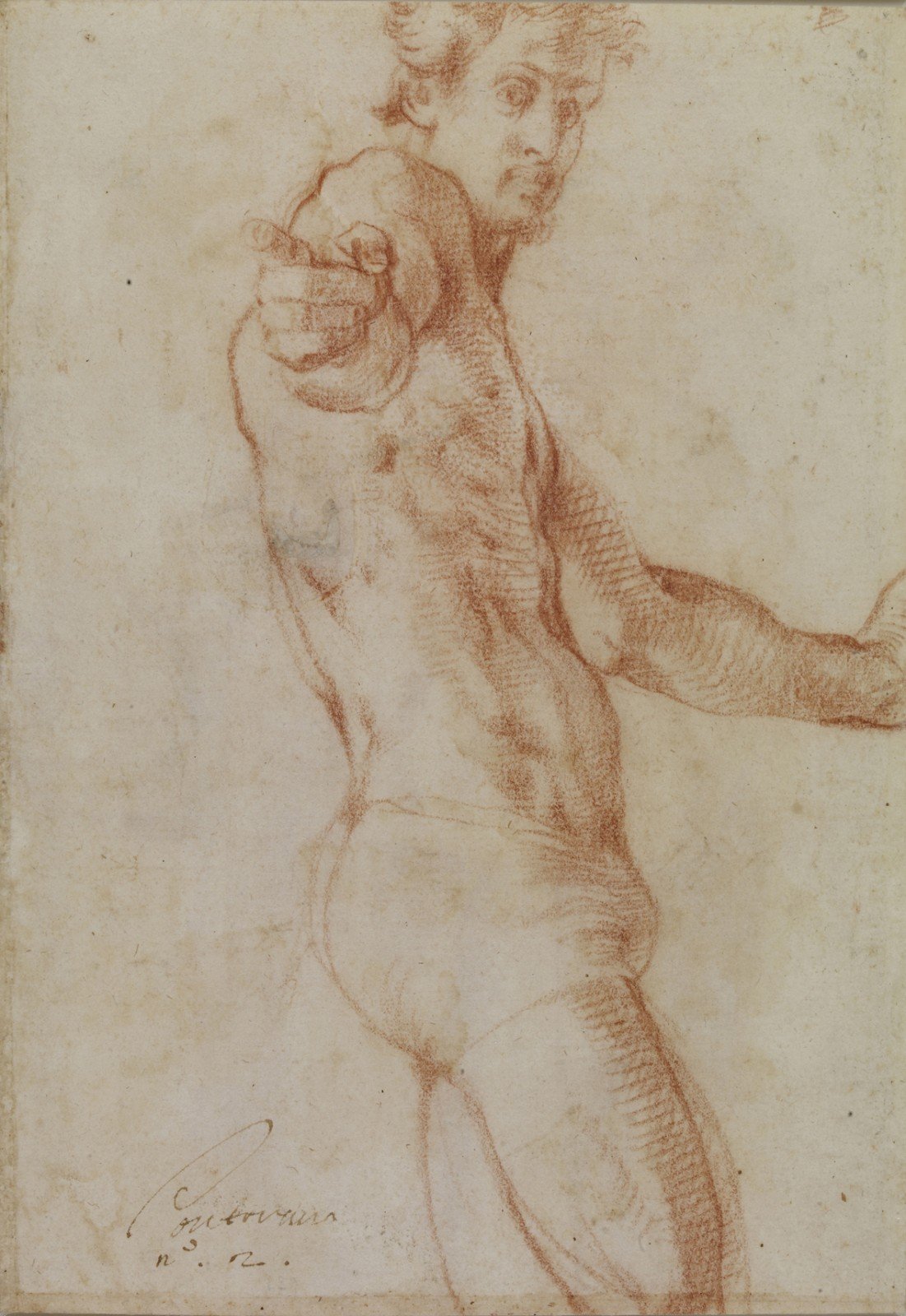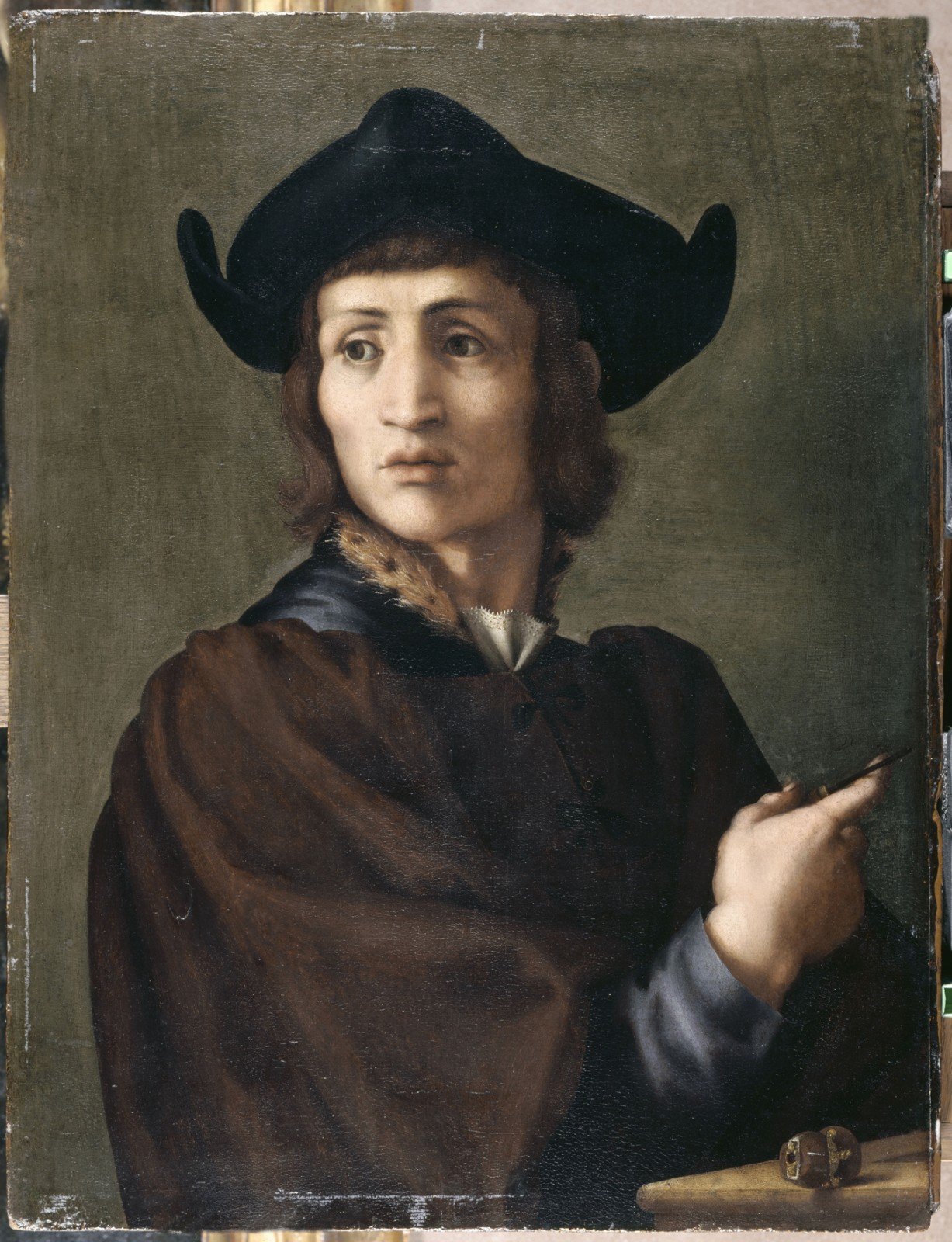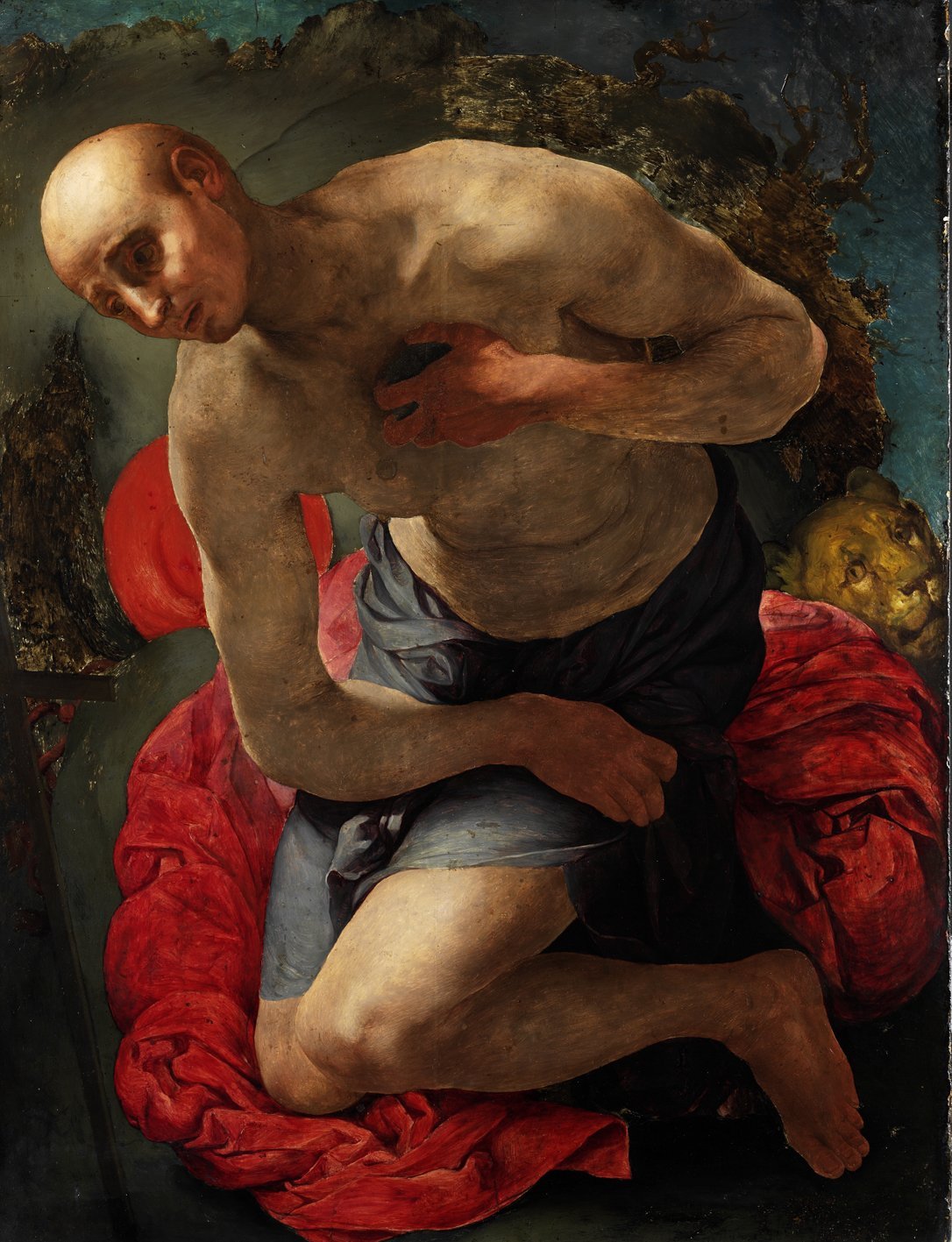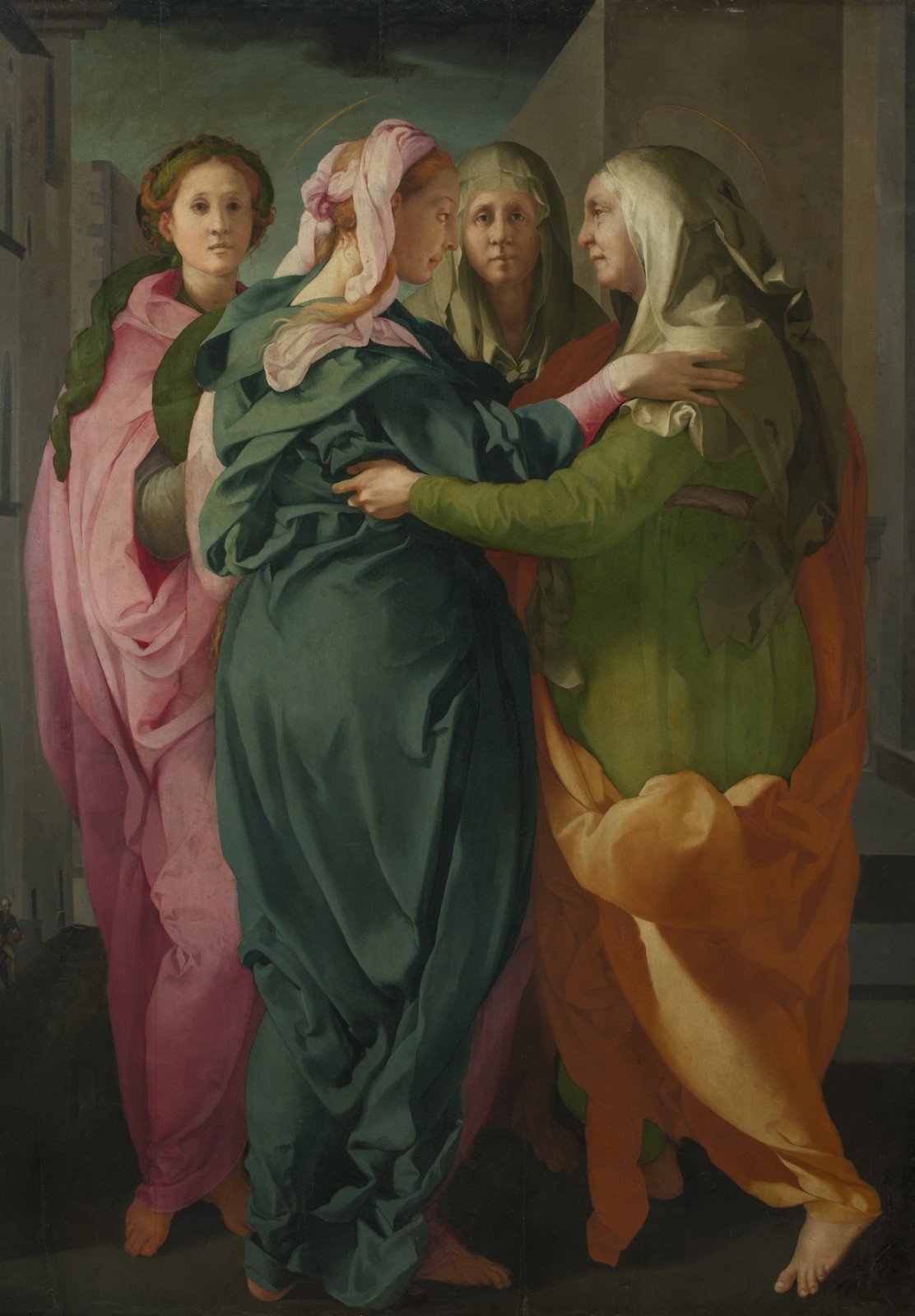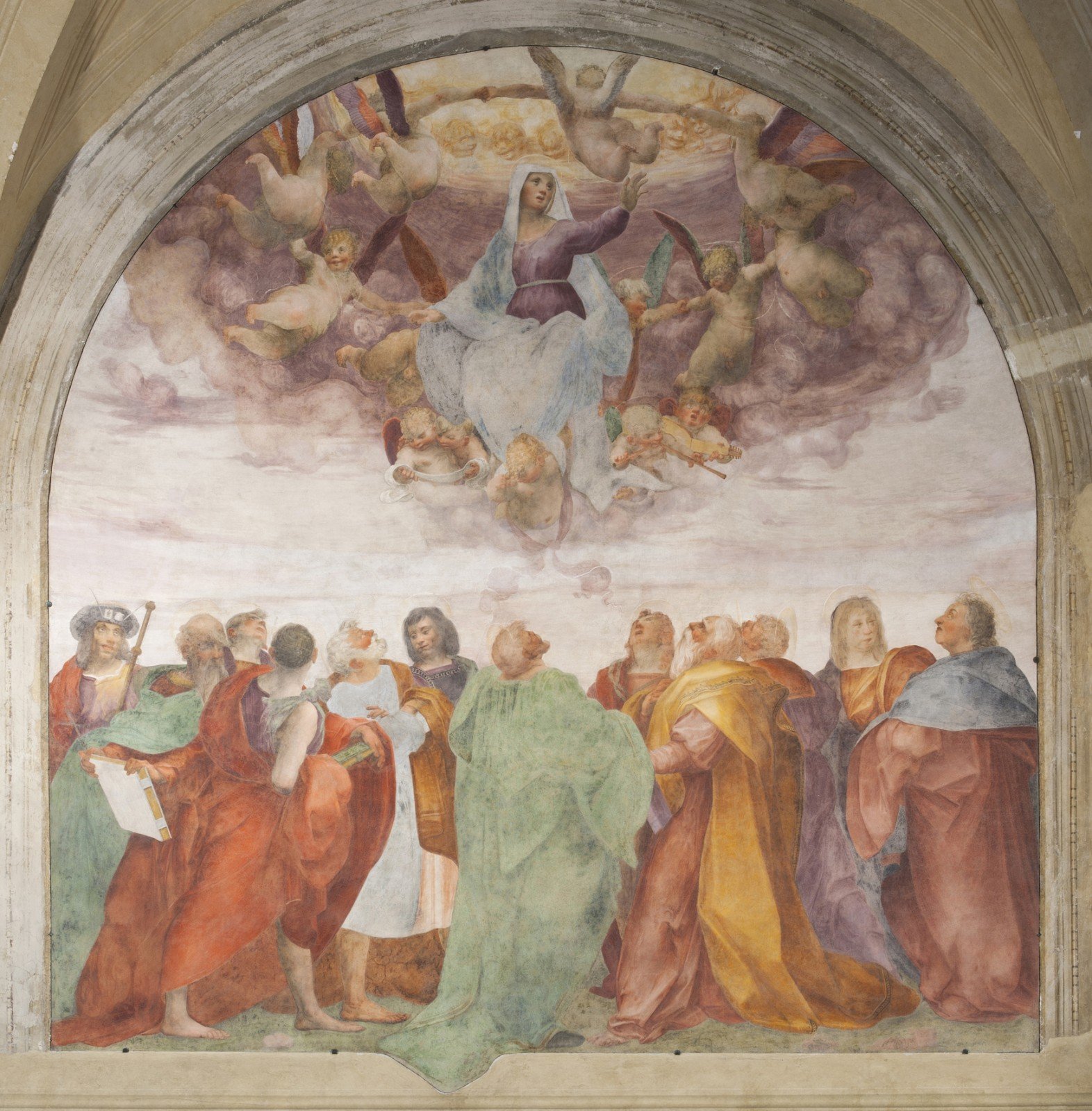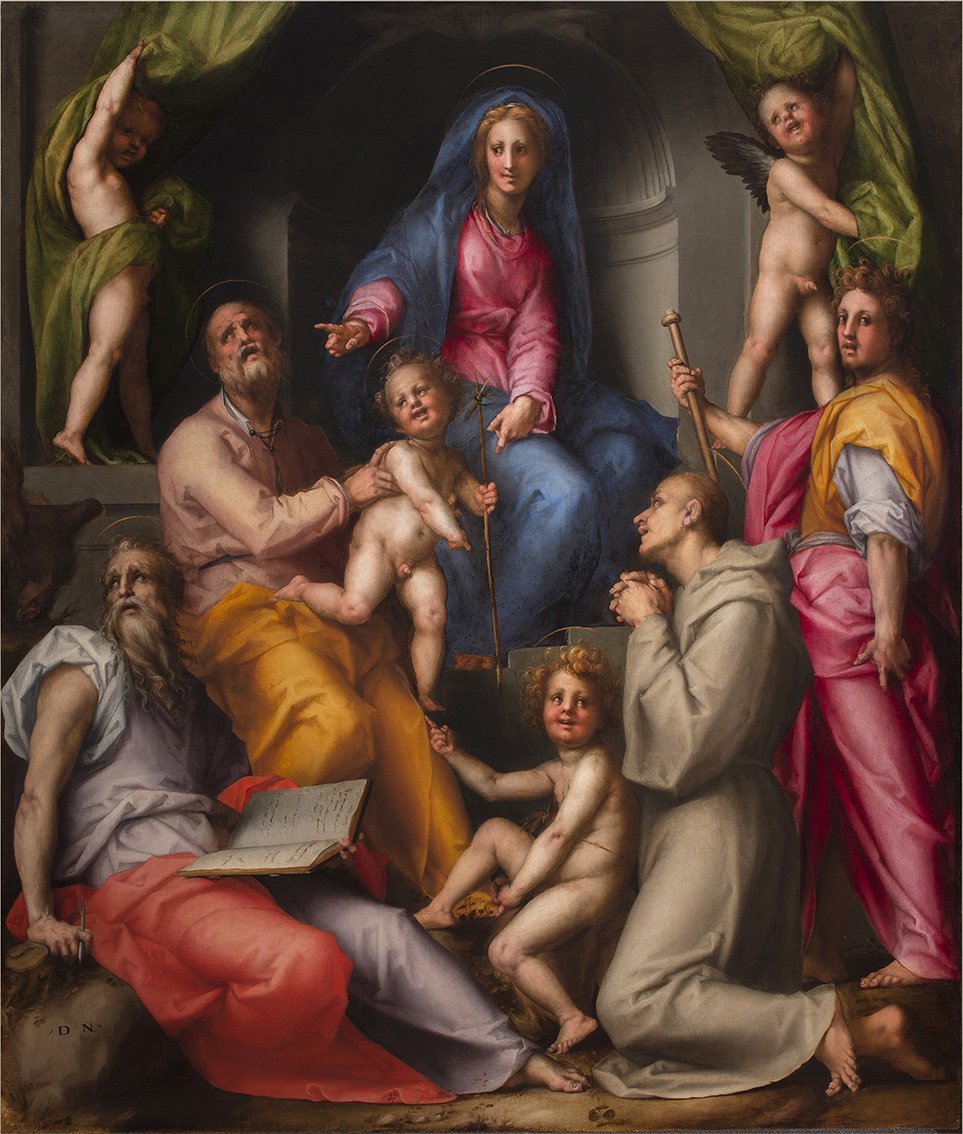That misanthrope obsessed with health, hygiene and sexual abstinence called Pontormo
- Pontormo (Jacopo Carucci; Pontorme, Empoli 1494 – Florence 1557), “Study of Nude (Self-Portrait?)”, 1522-1525; sanguine on paper, 281 x 195 mm. London, The British Museum.
- Pontormo (Jacopo Carucci; Pontorme, Empoli 1494 – Florence 1557), “Portrait of a Goldsmith”, 1518, oil on panel, 70 x 53 cm. Paris, Musée du Louvre – département des Peintures.
- Pontormo (Jacopo Carucci; Pontorme, Empoli 1494 – Florence 1557), “Saint Jerome Penitent”, about 1529-1530, oil on canvas, 105 x 80 cm. Hannover, Hannover Landesmuseum Niedersächsisches.
- Pontormo (Jacopo Carucci; Pontorme, Empoli 1494 – Florence 1557), “The Visitation”, about 1528-1529, oil on canvas, 202 x 156 cm. Carmignano, Parish of St. Michael the Archangel.
- Pontormo (Jacopo Carucci; Pontorme, Empoli 1494 – Florence 1557), “The Visitation”, 1514-1516, fresco, 408 x 338 cm. Florence, Basilica of the Santissima Annunziata cloister of the votes.
- Pontormo (Jacopo Carucci; Pontorme, Empoli 1494 – Florence 1557), “The ten thousand martyrs”, 1529-1530, oil on panel, 65 x 73 cm, Florence, Palazzo Pitti, Palatine Gallery.
- Pontormo (Jacopo Carucci; Pontorme, Empoli 1494 – Florence 1557), “Sacred Conversation (Pala Pucci)”, 1518, oil on canvas, 221.5 x 189.5 cm. Florence, Church of San Michele Visdomini.
From 8 March to 20 July 2014, Palazzo Strozzi in Florence will host the exhibition “Pontormo and Rosso Fiorentino. Streets of divergent manner”. The show is dedicated to the works of Pontormo and Rosso Fiorentino, two unconventional and open-minded painters amongst the protagonists of the new way of understanding art in the sixteenth century that Giorgio Vasari called the “modern manner”.
Pontormo and Rosso Fiorentino were students of Andrea del Sarto, but both maintained a strong independence and freedom of expression. While Pontormo was open to linguistic diversity and to the renewal of the compositional schemes of tradition, Rosso Fiorentino was closely tied to tradition (despite yearning for originality), influenced by Cabalistic literature and esoteric works.
Today we would like to focus on the first of the two artists: Jacopo Carucci, called Pontormo (Pontorme, Empoli 1494 – Florence 1557) to demonstrate how his art has been an important cultural reference as well as an inspiring source throughout the twentieth century and in the early years of our century too.
The starting point of our analysis lies in the collection of personal notes of the last period (1554-1556) of the artist’s life, “Il libro mio” (“My book”), also called “Diary”, a signed copy of which is preserved in the National Library of Florence, and will be on display at Palazzo Strozzi.
The book opens with a long account of medical nature, in which the author is recommended to follow a very rigid diet and fasting in order to cope with the humours, the particular negative, influence of the moon in winter and humidity. In general, the autobiography relates aspects of his daily life, from recording the food he ate and his health status to the progress of his last commission, the frescoes in the choir of San Lorenzo, listing the figures he was working on, often accompanied by descriptive sketches.
However besides what is specifically written in the diary, it is also very interesting to pay attention to the different interpretations the artist has been subject to in the twentieth century. In the eyes of the commentators of the last century, Pontormo emerged as a misanthrope, obsessed with health, hygiene and sexual abstinence. Thus, the nature of this character, which has even been defined as suffering from a bipolar personality disorder, weighed a lot when it comes to the interpretation of his works, considered, at times, conceptual, dreamy, metaphysical or surreal.
This suggestion has fascinated many artists and writers. Among the first examples, we can cite the cult movie by the Danish director Carl Theodor Dreyer’s “Passion de Jeanne D’Arc” (1928), where, in order to represent the woman’s pain, the director was inspired by the “San Quentin” by Pontormo.
Then, you might remember Vanessa Beecroft with her work entitled “The Book of Food”: a diary in which the artist collected the list of foods that she had ingested, every day, from 1983 to 1993. The diary, later transformed into a performance, puts the human body at the centre of the work, a theme which would characterize all subsequent Beecroft’s production.
The link between the work of Pontormo and the video “The greetings” by Bill Viola (presented at the 46th Venice Biennale, 1995) is even more direct. In his work, Viola refers to “The Visitation” by Pontormo – preserved in the church of Carmignano, but on display at Palazzo Strozzi. He tries to recreate the suspended (metaphysical) atmosphere of the Tuscan painter and to revive his saturated and loud colors.
References to Pontormo are also recurring in the Italian literature of the twentieth century. Carlo Emilio Gadda, for example, has included one of the portraits by Pontormo, that of Cosimo de ‘Medici, in his “Quer pasticciaccio brutto de via Merulana” (1957). Alberto Arbasino has quoted the “Deposition” of Santa Felicita in the novel “Brothers of Italy” (1963). That same work of Pontormo has been cinematically reinterpreted by Pier Paolo Pasolini in his film “La ricotta” (1962). The work of Pontormo entitled “Pharaoh With His Butler and Baker” from “Scenes from the Story of Joseph”, 1515-1518 (at the National Gallery, London) also has been revived recently by the artist Jon Rafman in a work of 2013, titled “Annals of Lost Time (Back, Back and Forth and Forth).”
The Italian writer Salvatore Silvano Nigro, who dedicated the artist his novel “The clock of Pontormo,” 2013, asserts: “Pontormo walks beside us and accompanies us, thanks to all the artists who have reinvented him”. Pontormo, in short, is also all the literature and the art which have constantly acknowledged him. And this is perhaps the reason why we feel that his works are so contemporary, even at a first glance.
July 18, 2015

